Photojournalism’s startling gender disparity
In 2016, World Press Photo and the Reuters Institute for the Study of Journalism published a startling statistic: only 15% of news photographers are women. And it’s likely that little has changed since then. At a time when diversity is being advocated in all fields, photojournalism remains mysteriously homogeneous in comparison to other photographic genres. Sam Edmonds gained an insight from some of the industry’s leading figures.
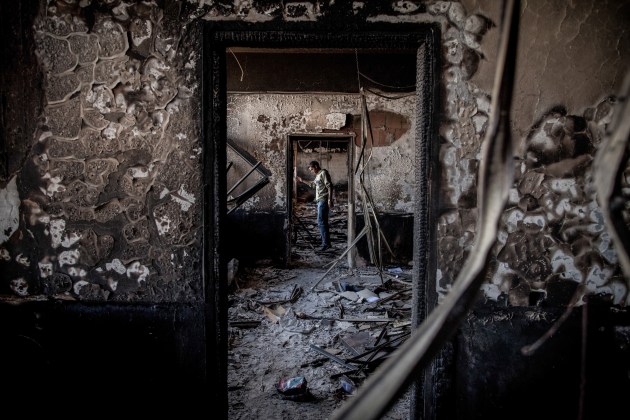
Due in part to the recent rise of the social justice left, discourse surrounding gender equality in industries across the board has recently peaked with fierce debate examining those professions traditionally dominated by men. Since an infamous Sky News article pitted alt-right broadcaster Milo Yiannopoulos against journalist Reni Eddo Lodge to hash out the lack of women in professional chess and STEM [science, technology, engineering, mathematics] subjects, columnists around the globe have given their two cents regarding gender-imbalanced métiers.
But, as with many creative industries, photojournalism seems to have flown under the radar of this debate until a recent statistic was revealed in the newly implemented annual World Press State of News Photography report. Relying on an online survey of 1,556 news photographers who entered the 2015 World Press Photo contest, the report outlined that 85% of respondents were male. Compared with several other industries, this makes news photography almost uniquely unbalanced when it comes to the inclusion of both men and women. So, why such a disproportion? How has this gone relatively unreported, or unaddressed, until now? And should we be aiming for a more even-sided ratio of male and female professionals?
History, stereotype, and war
For American photojournalist Andrea Bruce, part of the answer to several of these questions lies with the history of the news photography industry as male-dominated and the stereotype it has built. Photographers like Robert Capa and Eddie Adams gave way to James Nachtwey and perhaps most prominently in Hollywood, the image of The Bang Club: four rugged male photographers with scarves, stubble, and Leicas at the ready, flanked by their attentive, and attractive, female photo editor. All of this has accumulated in the subconscious image of a male photojournalist in the minds of photo editors. “I don’t think any editor is purposefully not trying to hire women, of course, but I think that there is this stereotype that people have in their mind,” Bruce says. “When they think, ‘Oh, I need to send someone to Mosul’, they are going to think of a scrappy, young man, and they are going to call that person.”
Celebrated as one of the world’s best photojournalists, and a co-owner and member of the NOOR photo agency, Bruce spent eight years at the Washington Post focusing on the United State’s presence in Iraq before making the plunge to freelance - a process that she says starkly highlighted the gender imbalance when unregulated by workplace mandates. “There are two different worlds in photography when it comes to documentary and photojournalism: there’s the newspaper world and then there's the freelance world. In the newspaper world, you have organisations where people keep an eye on diversity to some degree,” she says. “But then I left the Washington Post and dove into the freelance world where it is a completely different ball game - it is definitely not equal.” But Bruce’s time both as a staff photographer and a freelancer in Iraq served to illustrate many of the outside forces on the perception of women’s ability in war zones in general, noting a particular experience with the US Marines. “I had one situation where I showed up at a really remote outpost in Ramadi, in Iraq, and they wouldn’t let me stay where all the rest of the guys were staying. I had to stay in a shack pretty far from the rest of them, but it was little unsafe so the commanding officer made them stay up all night filling sand bags to cover my little shack to protect me,” she recalls. “It was one of the most humiliating situations.”
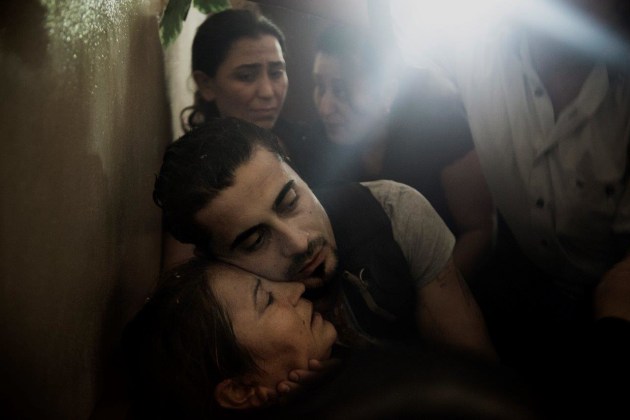
In addition to this, Andrea Bruce recalls a number of situations on the front-line where her gender became the focus of questions as to her ability in conflict zones. Recounting that “I have had soldiers tell me that I’m not supposed to be there just because I’m a woman,” Bruce points to the long-standing association between this male stereotype of photojournalists and the idea that women may be less suited to the role because of a deficiency in stoicism or natural aggression; the former of which she highlights as unnecessary, and the latter as perhaps just an unfortunate by-product of an extremely competitive industry. “It’s funny because I think people assume that assuming the stereotype of a tough guy will help you in a war zone, but I don’t think that is really true,” she says. “But, unfortunately, a lot of women find it difficult to be as aggressive as male photojournalists in the field. This is a very, very tough field and you have to be pushy. For a woman, it is hard to be pushy and be accepted, so women can often be seen as being too aggressive. It’s like that thin line that women have to stand on between being too passive or being too aggressive. I think that is still an issue.”

While Bruce specifically flags the outdated stereotype and a confidence/aggression gap as key elements to the issue, UK/USA-based documentary photographer Daniella Zalcman extends the list of influences on women to include “a lack of institutional support for young independent female photojournalists and frequent sexual harassment at the hands of editors, fellow photographers, and subjects,” but importantly, notes female photo editors as succumbing to stereotype as much as men. “Change doesn't happen overnight,” she says. “Just because some of the people in a position to hire women right now are women themselves doesn't mean we can undo decades of institutionalised sexism.” In fact, it would seem that “some” might be an understatement as women presently represent the overwhelming majority of top-tier photo editors at Time Magazine, Washington Post, National Geographic, The British Journal of Photography, The New York Times, The Sydney Morning Herald, and many other of the world’s most prevalent publications. So why this discrepancy between two very closely related roles in the industry?
According to Zalcman, the answer might lie in hiring practices and photo editor’s predicament of simply not being able to find many female photojournalists to choose from. In response, Zalcman founded Women Photograph – a repository of female photographers’ portfolios from around the world that, in her words, would attempt to “eliminate that excuse”. As she further explains: the impetus for founding Women Photograph was simple. “There's a huge diversity problem in the photojournalism industry, and that's dangerous. This is less an issue of affirmative action and more about making sure that we're being responsible journalists,” she says. “We can’t continue to represent the world to the general public through the eyes of only white men.” In addition to the reservoir of portfolios on the Women Photograph website, the organisation has recently launched a series of grants, will soon be launching a mentorship program, and also aims to begin a travel fund available to non-western photographers. But from the organisation’s initial M.O., it would seem that Women Photograph primarily seeks to put the ball in the court of photo editors.
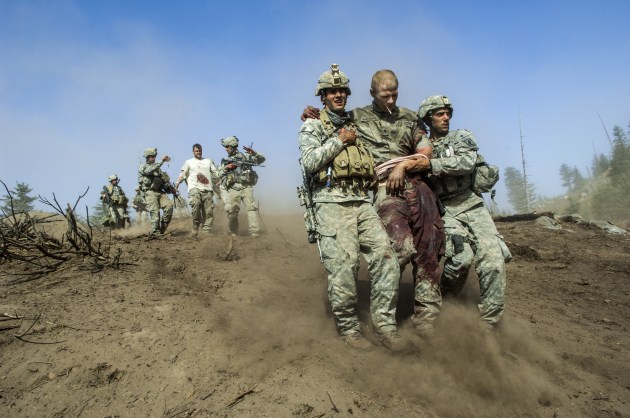
In agreeance with this is the Pulitzer Prize-winning photojournalist Lynsey Addario. Perhaps the most famous female photojournalist on Earth, Addario’s book, It’s What I Do, describes the perils of her life as a photojournalist so effectively that the story is set to be adapted to a movie starring Jennifer Lawrence. While Addario firmly echoes Zalcman’s point that editors favour men, she also points to a crucial time in women’s lives that perhaps disrupts the flow of a successful photojournalism career. In a recent New York Times article, Addario admitted that while news photographers, both male and female, are taking on very difficult careers, she thinks that “for a woman, it’s even harder”. As she elaborates: “Women have a finite limit on how long they are fertile, and this window often coincides directly in tandem with one’s success. Many photojournalists hit their stride and define their visual voice in their mid to late 30s, and this is just when a woman needs to find a partner, and decide if she wants to have a child. If so, she needs to step away from her career for about a year to do this. It’s already an incredibly competitive profession, and to take a year out, minimum, is not easy.”
Among Bruce, Zalcman, and Addario’s diagnoses of the problems underlying this phenomenon, there would seem to be a common thread that this issue is somewhat informed by Western dogma. As most of the big names in editorial and news publishing, as well as most of the names in photo editing, and indeed most photojournalists originate in developed, Western countries, is this disparity confined to the USA, Canada, Australia, and Western Europe? In chorus is Nichole Sobecki – an American photojournalist, who from 2012-2015 led Agence France-Presse’s East Africa video bureau, and was a 2014 Rory Peck Awards News Finalist for her coverage of the Westgate Mall attacks in Kenya. While Sobecki specifically highlights the “hiring practices and the hierarchy of Western male privilege” as a major factor, her time in Africa perhaps shed some light on a more universal disparity. “AFP’s video department stands out in the industry in terms of gender diversity,” she says. “It was built by a woman, both myself and my successor have been women, a woman manages their Africa coverage, English-language department, and more. [But] on the ground, in the thirteen countries I managed, replicating that diversity was almost impossible. I worked hard to seek out women to hire, and to spend time training people I worked with regardless of gender. If the media industry in the US and Europe is still dominated by men, it’s far more so here.”
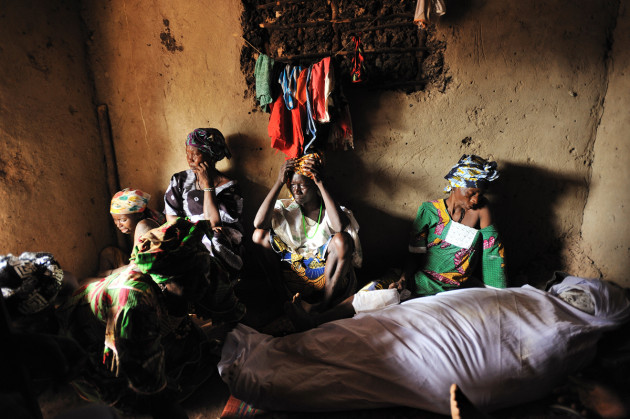
Heralding women
But is it naive to assume, or even to insinuate, that gender imbalance could be solved simply by placing the onus on photo editors to halve assignments between men and women? Now that Women Photograph exists, can we expect to see 50/50 rather than 15/85? Or what else is at play here? As Sydney Morning Herald photo editor Mags King details, there may be much more to consider than just splitting it down the middle when it comes to delegating assignments.
At the helm of the photo department for one of Australia’s largest print and online news outlets, King is tasked with the processes of both editing visual content for the Herald and with tasking the Fairfax photography team with assignments, both locally and internationally – a process that she says considers the individual personalities of her team members, but most importantly, the sensitivities of the subjects involved. “Day in, day out you have news and people stories that might be, for example, a mother that has lost a child, or a breast cancer victim; something that is sort of sensitive,” says King. “In those cases, it does cross your mind. You think; OK, I don’t think a female subject that has been through something horrendous will feel comfortable if I send a male photographer.” The result of this, says King, is an immense benefit not only for the subject, but also for the photographer and the resulting images. “What I get [in these scenarios] if I send someone like Louise Kennerley or Kate Geraghty is a subject who is far more relaxed, and it will be a far easier procedure. If you only have an hour with the subject, they can feel at ease much quicker.”
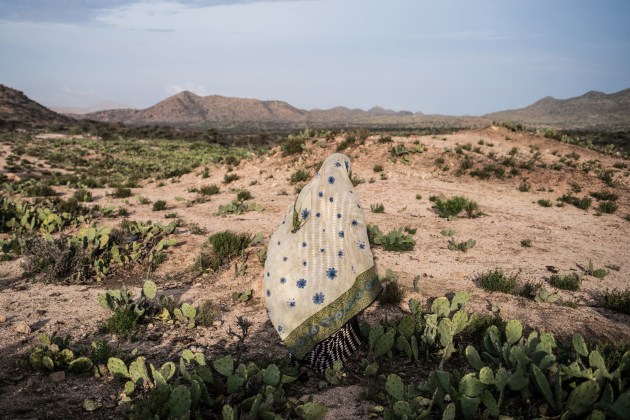
King explains, that for an experienced photo editor of more than twenty years, this process of pairing subject and photographer is “almost natural – it’s an instinctual thing”, but as she openly admits, her reliance on the behaviour patterns and sensitivities of men and women, to do her job well can at times feel anomalous in a society where political correctness remains the order of the day. “This is the interesting thing because at the moment we’re in the whole world of ‘we shouldn’t have these traditional thoughts in our head’, but it is actually being human beings,” King says – alluding to an assignment on which she sent Fairfax staff photographer, Kate Geraghty to document the daily life of Hamas leader, Khalid Mishal. “In those photos you can see that that guy was completely open with Kate and at ease with sharing his very, very private life, and his family. And the pictures that she got were just incredible,” says King. “But if you had sent a man on that job, it could have worked the opposite way. With testosterone and cultural differences, etc. I can almost bet that that would have played a part in unpeeling and revealing who this person is.”

2 August, 2014. © Kate Geraghty.
Boasting a number of Australia’s most celebrated photographic names including Geraghty, James Brickwood, Nick Moir, and Peter Rae, King’s quiver of talents to draw upon at the Herald is substantial, however, while photographic competence is high across the board, King points to the variability in confidence between her male and female staff. “When it comes down to it, women are really concerned about getting the work done properly; they tend to be more concentred about ownership and they will ask questions. But what I put it down to is that they just don’t want to fuck up,” she says. “These are people that have been photographing for twenty or thirty years, yet the confidence level is not there. But if I give a compliment to a male photographer, if I tell them something they did was really good, the response is really, ‘Oh, cheers, but I knew that anyway – I know it’s good’”.

In response to this, it has been King’s personal mandate to facilitate the assertiveness of her female staff. “I think it is really important for me to boost females’ confidence, to herald them, and to push for their names for equality,” King says. “Only by having those affirmations can you build confidence and make younger female photographers feel confident as well.” Attesting to this, and in stark contrast to Bruce and Zalcman’s idea of sexism among photo editors, Herald staff photographer Kate Geraghty says that her career both at Fairfax and physically on the front lines in the Middle East has seen her constantly supported by Mags King and other photo editors at The Sydney Morning Herald. “I was the first female photographer that Fairfax sent to conflict and during that, my editors had my back,” says Geraghty. “I’ve actually been chosen to go to conflicts and cover for the Herald because of experience, and because I’m the right person for the job. In my experience, I’ve never ever been knocked back from an assignment because I’m a female. Especially conflict.”
Having risen quickly to the top of Fairfax’s ranks, Geraghty is now one of Australia’s most prominent photographic voices and since joining The Sydney Morning Herald in 2001 has ostensibly become King’s go-to person for conflict coverage. Having covered stories in Bali, Jakarta, Sumatra, Iraq, Lebanon, Cambodia, and Singapore, Geraghty has made a name for herself as a seasoned and adept conflict storyteller which has been recognised by several Walkley Press Photographer of the Year awards and a United Nations Peace Award for Photojournalism.
But as Geraghty says, while this illustrious career was made possible by the efforts of female photojournalists before her, she believes the focus now should move to advocating simply for ethical storytelling. “I was blessed to be starting my career at a time when female photographers have already championed their position, and I am deeply respectful of that,” she says. “But I think now, in today’s society, we just need good photographers telling great stories, and doing it ethically. It shouldn’t be about male or female, but then again, I live in a country where in society, women are equal to men so I am coming from a very privileged position. Of course, you want stories to be told by both genders, but at the end of the day, if people are telling stories ethically and respecting the subject matter, I don’t care who does it.”
The future in equality
Since the publication of World Press Photos’ inaugural report in late 2015, the State of News Photography has since seen its second edition with absolutely no change to the original statistic. Women are still outnumbered almost 9:1 by men in news photography and while Women Photograph now represents the world’s first database of female practitioners, the website currently only lists ten women available for hire in all of Australia, and none in New Zealand.
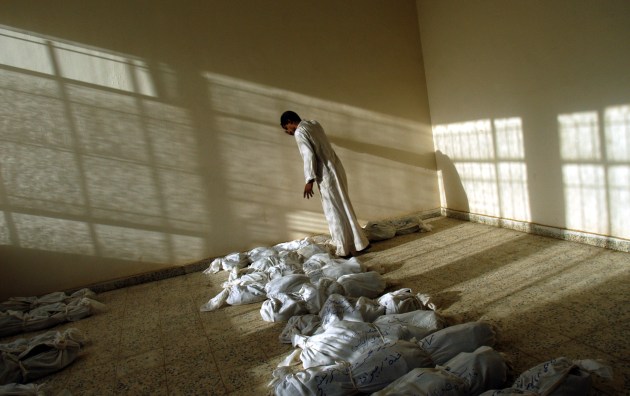
So, what does this array of some of the industry’s most prominent female practitioners see for the future of women in photojournalism? As Zalcman says, the issue of gender disparity in news photos will remain stagnant as long as “societal sexism” still prevails and that “we can’t hope to truly tackle it in our industry until it’s being addressed more effectively societally.” One point Zalcman emphasises is that better equality among assignment distribution boils down to “a matter of knowing what each photographer’s strong suit is - and [knowing that] that has nothing to do with gender.” She also posits that “on average, women sometimes tend to be more drawn to longer, slower, more intimate stories.” So, in news photography where the workflow is inherently shorter, faster, and less intimate, does this perhaps shed some light as to a partial cause for the lopsided gender ratio? Zalcman believes that it might, but for her it’s a pretty unimportant conversation. “There are plenty of women interested in reporting hard news and they need more institutional support,” she says.
According to King, “there is definitely an underlying, more sort of cautious approach in all the female photographers at The Sydney Morning Herald. I don’t know where it stems from, but perhaps, if I’m going to align myself with them, it’s probably about not wanting to fail, and really doing your best, because it’s your name at the end of the day.” From this, it would seem that Zalcman’s and King’s sentiments, while seemingly at odds, both tacitly and explicitly (respectfully) admit to a subtle difference in the modus operandi of men and women in news photography. The only difference is in the trajectory from this point. While King and Geraghty seem to have thrived in a photo editor/photographer relationship that sees both making decisions partly influenced by Geraghty’s strong points and abilities as a woman in the field, Zalcman seems less inclined to embrace this more “traditional” thought process, but advocates simply for a more even split between who is telling the “most important stories”. Both of which seem to be striving for the same goal: making sure that we're being responsible journalists.

